Obama Drove Afghan Strategy Debate
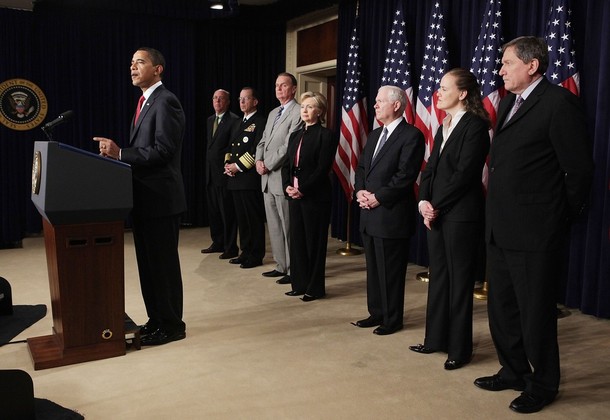 Big features on the decision-making process behind the newest new Afghanistan strategy in both NYT (“How Obama Came to Plan for ‘Surge’ in Afghanistan “) and WaPo (“Obama pressed for faster surge“) paint a flattering picture of a commander-in-chief taking control of the process.
Big features on the decision-making process behind the newest new Afghanistan strategy in both NYT (“How Obama Came to Plan for ‘Surge’ in Afghanistan “) and WaPo (“Obama pressed for faster surge“) paint a flattering picture of a commander-in-chief taking control of the process.
Peter Baker sets the stage by noting the factors weighing on President Obama’s mind, most notably a visit to Arlington National Cemetary and budget projections showing the war costing roughly as much as his health care plan ($1 trillion over 10 years).
Now as his top military adviser ran through a slide show of options, Mr. Obama expressed frustration. He held up a chart showing how reinforcements would flow into Afghanistan over 18 months and eventually begin to pull out, a bell curve that meant American forces would be there for years to come.
“I want this pushed to the left,” he told advisers, pointing to the bell curve. In other words, the troops should be in sooner, then out sooner.
When the history of the Obama presidency is written, that day with the chart may prove to be a turning point, the moment a young commander in chief set in motion a high-stakes gamble to turn around a losing war. By moving the bell curve to the left, Mr. Obama decided to send 30,000 troops mostly in the next six months and then begin pulling them out a year after that, betting that a quick jolt of extra forces could knock the enemy back on its heels enough for the Afghans to take over the fight.
Anne Kornblut, Scott Wilson and Karen DeYoung recount a similar tale.
On this day, Nov. 11, the president scanned the choices with a trace of irritation. At a meeting more than two weeks earlier, he had asked for a plan to deploy and pull out troops quickly — a “surge” similar to the one that his Republican predecessor had executed in Iraq, but with a fixed date to begin withdrawals.
What was in front of Obama — scenarios in which it took too long to get in and too long to get out — was not what he wanted.
“I don’t know how we can describe this as a surge,” he said in a tone that others around the table registered as annoyance. “I’m usually more sedate than this,” Obama acknowledged, according to a senior adviser who read from notes he took at the meeting.
By the time Obama returned 10 days later from a trip to Asia, military officials had come up with plans to deploy troops much more rapidly than originally proposed by Gen. Stanley A. McChrystal, the top U.S. and NATO commander in Afghanistan. The new plans also called for fewer U.S. troops than McChrystal had requested and specified that they would begin to come home by July 2011, starting a glide path toward ending a war that, according to opinion polls, only a minority of Americans think is worth fighting.
As described in interviews by more than a dozen senior administration and military officials who took part in the strategy review, the final number of 30,000 more American troops and the timing of their deployment were among the last policy elements to be finalized. Obama’s new strategy, which he announced in an address to the nation last week from the U.S. Military Academy at West Point, N.Y., would push the total U.S. military force in Afghanistan to about 100,000 by mid-2010 and make new demands on America’s NATO and other foreign partners.
[…]
Obama “didn’t just want a number picked out,” said the official, who attended all the meetings. “He wanted the strategy to drive the number.”
That the two most important newspapers in the country are running the same day with such similar stories makes it clear that this was very much part of the rollout plan. My Atlantic Council colleague, Damon Wilson, recently emphasized how much the administration learned from the poor reception their missile defense plan received and strove to get buy-in from key stakeholders before surprising them with the public release.
My strong guess is that we’ll get a slightly less flattering picture of all this in a couple of years, once the inevitable tell-all books start to come out. But it won’t matter very much by then.

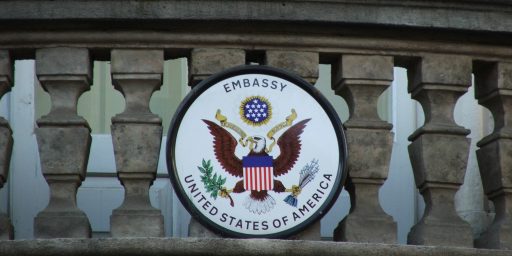
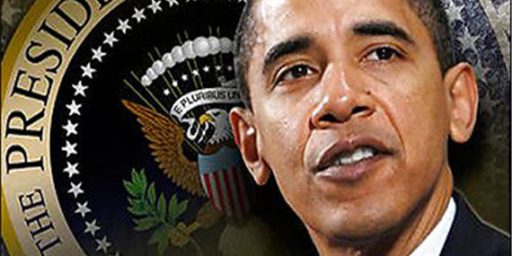
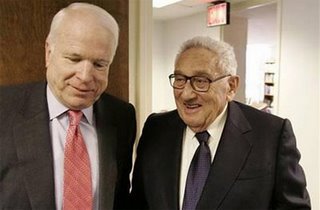
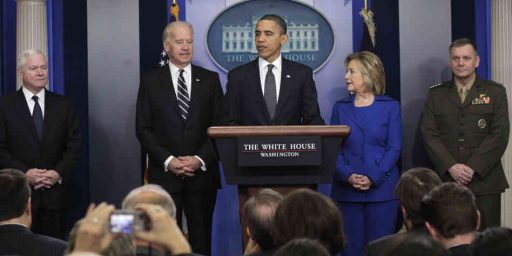
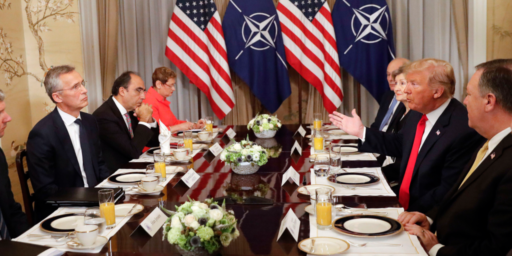
If only! That wasn’t the way I read the article in question. I read it as saying that the incremental cost of the troop build-up would be $1 trillion over 10 years. That’s more consistent with my calculations of how much it costs to field each soldier in Afghanistan.
All hail our glorious commander and chief who can in a split instance see all the strategic implications and come to a decision.
The good news is that Obama’s decision is also a jobs bill for people to sell ‘July 2011’ T-shirts to the taliban.
This is a flattering picture, if you think that troop numbers and duration are the key strategic decisions. As opposed to decisions about what our objectives are, what various means are available to reach them, and what to do in the event of various contingencies. I’d be more interested in the evaluation of the “Biden Plan.”
Dave, are you saying the $30 billion figure given by Obama isn’t true?
BTW, Pat Lang’s take on the Obama Plan is somewhat different—he thinks that Obama was rolled by the generals. Since Col. Lang knows a lot of the players I think that his view deserves a certain amount of weight.
His take on the on-screen reactions of the cadets is interesting, too, and something that I’d give a certain amount of weight considering his experience in teaching at West Point.
What I’m saying is that on average we’ve spent three times per soldier on Afghanistan what we’ve spent in Iraq. The way I count it that means that putting 100,000 U. S. soldiers in Afghanistan would cost darn near what both wars together have cost.
My reaction to reading Lang is he’s merely touched on one of the revealed truths: In situations of ambiguity, initiative goes to those with a plan.
(I can’t remember if it’s revealed in the Bible, Sun Tzu, or Gordon Gekko)
If cost is more important than winning, in war, you might as well pay tribute then pray they leave you alone. If you want to win wars, you make all your assets available to the commander on the ground and let him win. If you want to lose a war you let politicians decide how the war is fought. Viet Nam and Korea are a case in point.
Thanks Dave, good link. Yes PD, but the tragedy is that those with a plan to “win” may be less wise than those without. Zelsdorf paints a familiar false dichotomy. You don’t have to fight ground wars. You can play the “bomb them when you want to” strategy.
I suspect that everyone involved is choosing fairly conventional next-steps because those have the least risk of individual and institutional blow back. What if there is a successful terrorist attack? How does the career and political damage change with and without an continuing ground war?
I don’t think this has anything to do with winning. I don’t think winning is easily definable, or realistically achievable, and I don’t think Obama’s dumb enough to think any different.
I consider this the “Walk before they make us run” strategy. I think we’re buying some time by backing the Taliban up, to arrange a dignified as opposed to a helicopters-on-the-embassy-roof kind of withdrawal.
I suppose we’re pushing as well for the kind of fundamental changes — the ISI decides to abandon the Afghan Taliban, the Pakistanis actually manage to hammer the Pakistani Taliban into submission — that might allow us to reach something an optimist might call a “win.”
We stepped in sh*t. We then spent many years letting our boots sink ever deeper into it. And now we’re trying to pull back out of it without leaving our boots behind.
Yet another intractable mess left behind for Obama by the geniuses in charge of the previous administration.
Huh? I can’t tell if this is sarcasm or reverse sarcasm, since many have noted that significant amount of time that Obama took to devise the plan.